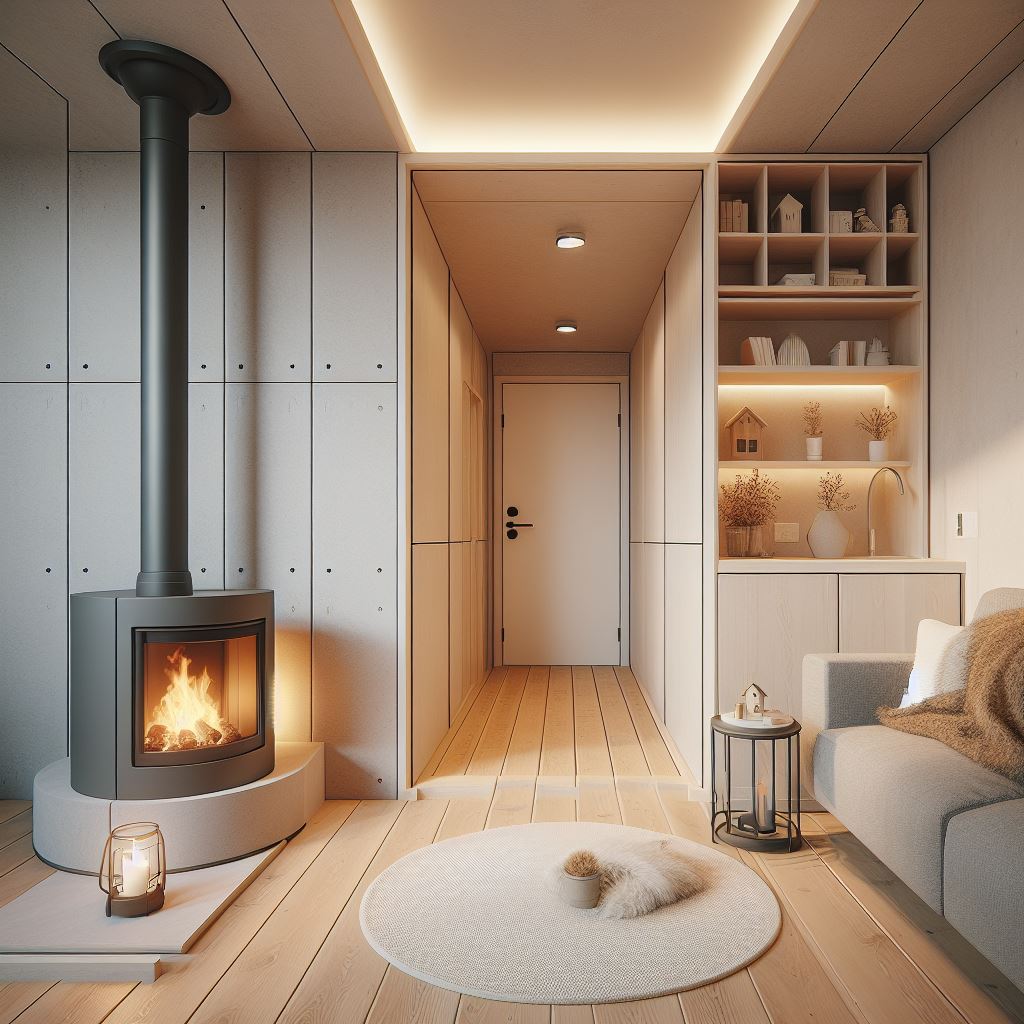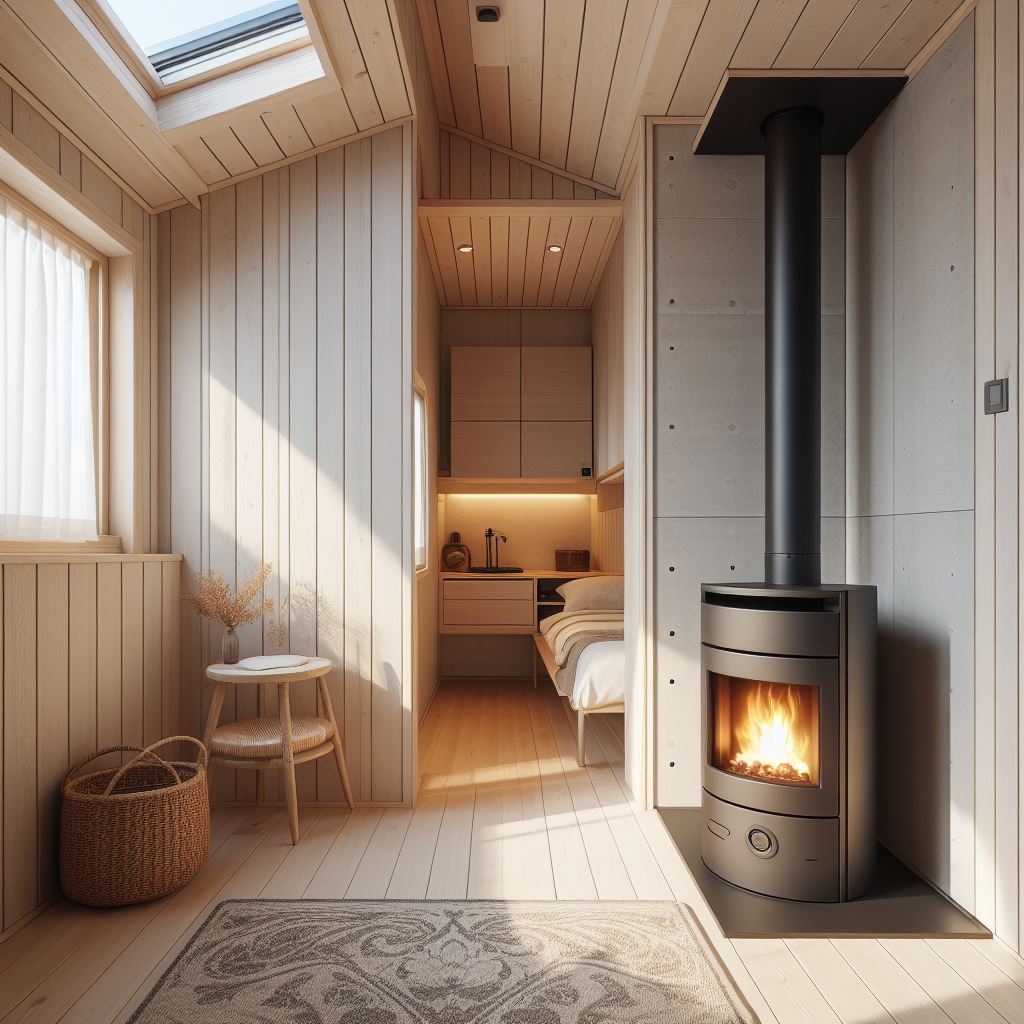When it comes to heating solutions in home construction, pellet fireplaces are a standout choice, both in terms of efficiency and environmental friendliness. As a seasoned builder, I’ve seen firsthand the shift towards more sustainable and cost-effective heating methods. Pellet fireplaces fit this bill perfectly, offering a practical and efficient heating solution that resonates well with both home handymen and self-employed construction professionals.
- Eco-Friendly: Utilizing pellets made from compressed wood or biomass, these fireplaces are a leap forward in using renewable resources. This approach significantly reduces waste and benefits the environment.
- Cost-Effective: Pellet fireplaces are a smart investment. Their efficient operation leads to reduced heating costs over time, balancing the initial setup cost.
- Suitable for DIY Enthusiasts: With the right tools and some basic know-how, setting up a pellet fireplace is a feasible DIY project that can be both rewarding and fun.

Understanding Pellet Fireplaces
Pellet fireplaces operate by burning compressed wood or biomass pellets. They are a modern take on heating, combining efficiency with convenience. These units typically come with an automated system that feeds pellets into the fire, maintaining a consistent temperature and reducing the need for manual intervention.
- Fuel Efficiency: Pellet fireplaces outperform traditional wood stoves in efficiency, extracting more heat from less fuel.
- Ease of Use: The automated pellet feeding system and thermostat control simplify operation, a sharp contrast to the manual effort needed with traditional wood stoves.
- Cleaner Burning: These fireplaces produce less smoke and ash, translating to fewer chimney cleanings and a cleaner home environment.
Types of Pellet Fireplaces
In the world of pellet fireplaces, there are mainly two types that you might consider for your home project: indoor pellet stoves and wood pellet fireplace inserts.
- Indoor Pellet Stoves:
- Features: These standalone units are equipped with a hopper for pellet storage, an automated feeding system, and often, programmable thermostats for easy temperature control.
- Ideal Use Cases: Ideal for heating individual rooms or smaller houses, these stoves are perfect for adding warmth and ambiance without extensive remodeling.
- Wood Pellet Fireplace Inserts:
- Differences: Designed to fit into existing wood fireplaces, these inserts are an excellent way to upgrade to a more efficient heating system without a major overhaul of your current setup.
- Benefits: They combine the charm of a traditional fireplace with the efficiency and modern convenience of a pellet stove, making them a popular choice for renovation projects.
By understanding the types and benefits of pellet fireplaces, you can make an informed decision on the best heating solution for your home. Whether you’re a DIY enthusiast or a professional in home construction and renovation, pellet fireplaces offer a blend of practicality, efficiency, and environmental responsibility that aligns well with modern home improvement goals.

Installation Insights
When it comes to installing a pellet fireplace, precision and attention to detail are key. Through years of hands-on experience, I’ve compiled a guide that balances simplicity with thoroughness:
- Choosing the Location: The right location is paramount. Look for a spot with ample ventilation and a safe distance from flammable materials. It’s not just about where the stove fits, it’s about where it operates safely and efficiently.
- Venting is Vital: Proper venting ensures safety and performance. Whether you’re venting through a wall or using an existing chimney, ensure it complies with local codes and is free from obstructions.
- Electrical Connections: For stoves requiring electrical connections, accuracy is non-negotiable. If electrical work isn’t your forte, hiring a professional electrician is a prudent decision.
- Initial Testing: Before regular use, test the stove. Check for efficient venting, seamless pellet feeding, and any unusual noises.
Safety Tips and Best Practices:
- Adhering to the manufacturer’s guidelines is crucial for safety and efficiency.
- Keep a fire extinguisher accessible as a precaution.
- Functional smoke and carbon monoxide detectors are non-negotiable for safe operation.

Maintenance and Upkeep
Regular maintenance of your pellet stove is essential for efficiency and longevity. Here’s a routine I’ve found effective:
- Routine Cleaning: Regularly empty the ash pan and clean the burn pot. This prevents clogs and maintains efficiency.
- Venting Inspection: Annually inspect the venting system to ensure it’s clear and functioning correctly.
- Professional Inspection: An annual professional inspection can identify and resolve issues beyond the scope of routine maintenance.
Common Troubleshooting and Repairs:
- Issues with ignition often stem from the pellet supply or igniter.
- Unusual noises often indicate problems with the fan or auger, which might require lubrication or replacement.
Cost and Efficiency
The cost and efficiency of pellet fireplaces are crucial factors to consider:
- Cost Analysis:
- Initial Investment: The initial cost includes purchasing the stove and installation. Some modifications for venting may also be necessary.
- Long-Term Savings: Pellet stoves are highly efficient, leading to reduced heating costs. The affordability of pellets compared to other fuels adds to long-term savings.
- Efficiency Comparison:
- With efficiency ratings up to 90%, pellet stoves surpass traditional wood stoves and most gas heaters in performance.
- Their clean-burning nature means less fuel waste and more heat utilization.
Incorporating a pellet fireplace into your home not only enhances its warmth but also contributes to long-term cost savings. With these guidelines, homeowners at any skill level can confidently approach installation and maintenance, ensuring their pellet stove remains a valuable and efficient part of their home heating system.
Eco-Friendliness
In the realm of home heating, pellet fireplaces have carved out a niche for themselves as a beacon of environmental responsibility. Drawing from my extensive experience in home renovation, I can attest to their growing popularity among eco-conscious homeowners.
- Environmental Benefits: Pellet fireplaces stand out for their low emissions, a significant plus for air quality. They burn so efficiently that they leave behind minimal ash and almost no smoke. It’s this kind of innovation that’s reducing our carbon footprint in home heating.
- Sustainability of Wood Pellets: The fuel for these fireplaces, wood pellets, epitomizes sustainable energy. Made from compressed sawdust and other wood waste, they repurpose what would otherwise be debris. This not only minimizes waste but also utilizes a renewable resource, aligning with sustainable living principles.
Choosing the Right Model
Selecting the appropriate pellet fireplace is akin to choosing the right tool for a particular job – it requires a balance of knowledge and practicality.
- Size and Output: The efficiency of a pellet fireplace hinges on its compatibility with your space. A model too powerful for a small room can lead to excess heat, while an underpowered one struggles in a large area. It’s about finding that sweet spot.
- Features: Features like easy-to-use controls, automatic pellet feeders, and programmable thermostats can significantly enhance the user experience. They’re worth considering for the convenience and precision they bring to home heating.
Recommendations for Different Home Sizes and Needs:
- Small Spaces: Opt for a compact model with lower BTU output. It will provide adequate heat without overwhelming the space.
- Large Areas: A high-BTU stove is ideal for spacious areas, ensuring even heat distribution throughout the room.
- Whole-House Heating: For those looking to heat their entire home, a high-end model with advanced features is the way to go. These systems offer greater control and efficiency for larger spaces.
FAQ Section
Pellet stoves excel in efficiency, eco-friendliness, and cost-effectiveness. They burn cleaner and more efficiently than traditional wood stoves, and over time, can be more economical than oil or gas heating options.
Frequency of refilling depends on usage and stove size. In the heart of winter, daily refilling might be necessary. Pellets are readily available at hardware stores, or you can order them online for convenience.
While a DIY installation is possible for those with a good grasp of home improvement skills, I recommend professional installation to ensure safety and efficiency, especially for those unfamiliar with the intricacies of stove installations.
Regular maintenance includes cleaning the burn pot, ash trap, and ventilation system to prevent blockages and maintain efficiency. An annual inspection by a qualified technician is also advisable.
Depending on your location, there may be government incentives or rebates available for installing energy-efficient appliances like pellet fireplaces. It’s always worth researching local and state programs for potential savings.
